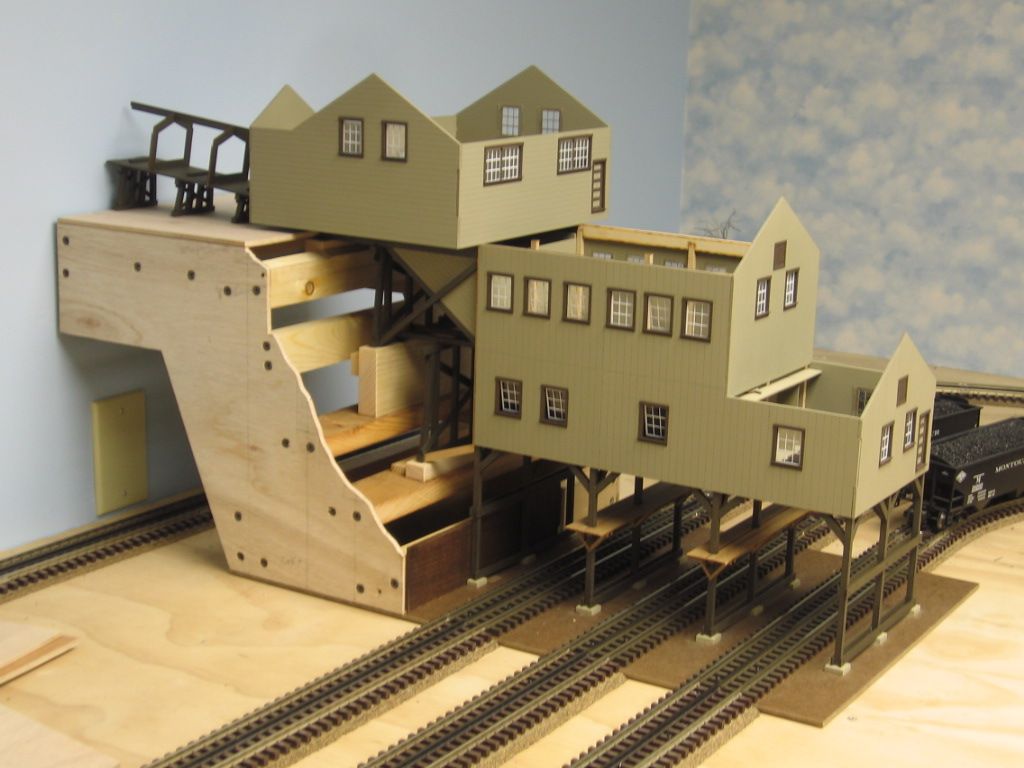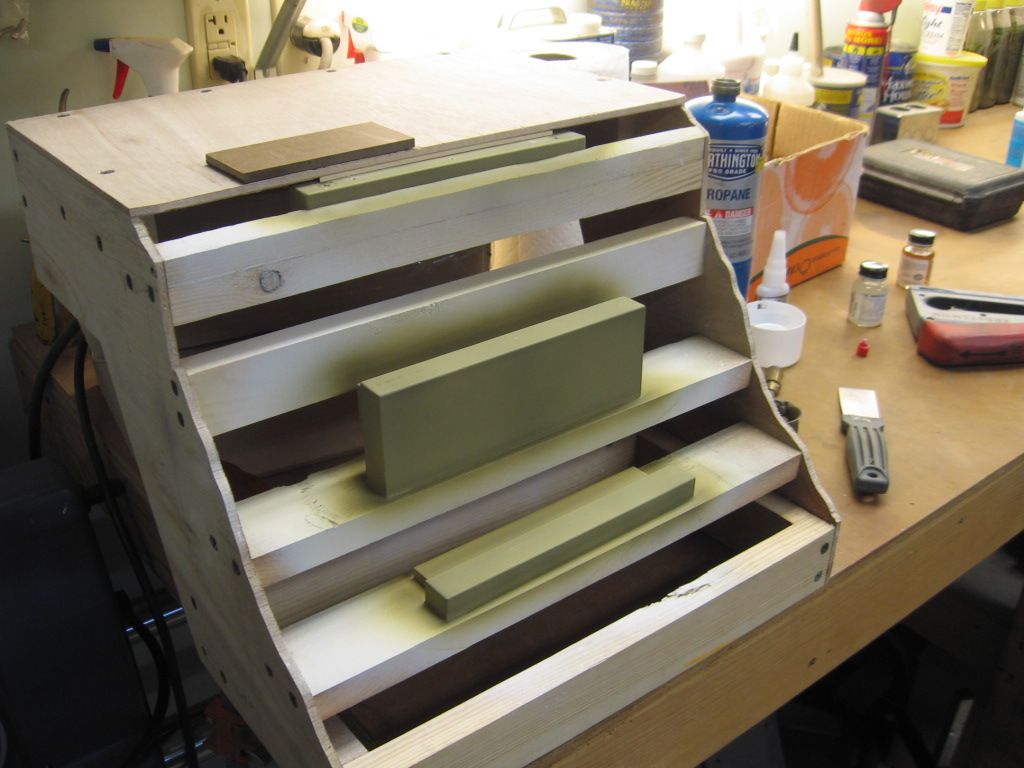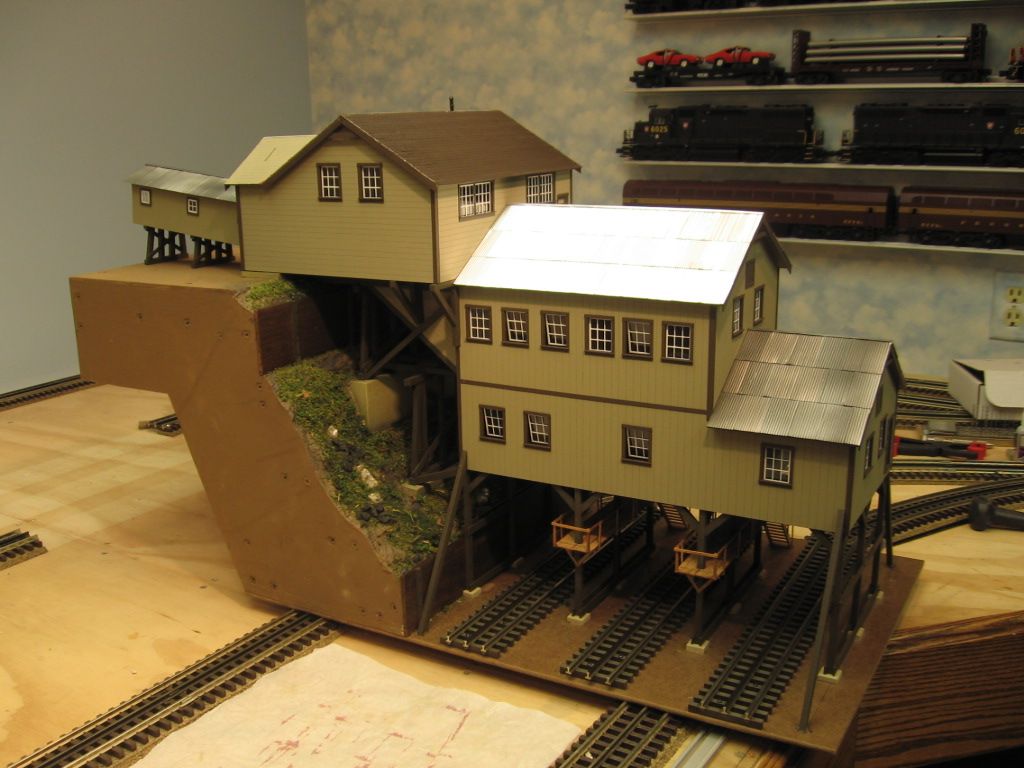Many years ago, I was involved in the construction of a very large holiday layout at West Virginia University. We used paper towels dipped in Hydrocal over a chicken wire frame for the hard shell scenery. I remember that we had a terrible time with yhe Hydrocal setting up before we could get it on the frame. We tried very cold water (even ice water), and adding sheep manure into the mix to try to get a slower setting plaster, to no avail.
Now, I am about to begin covering my cardboard strip mountain frame with plaster cloth, but I can't find any information on what temperature the water I am dipping the plaster cloth in should be for slow setting to allow for adjustment on the frame.
I am also planning to paint the mountain per Dave Frary's technique. He describes using a wash of "scenery black" paint composed of two parts "earth pigment to 1 part flat black as a primer coat. I believe he is using Poly Scale paints, but since Poly Scale paint is discontinued, I have not been able to determine what Color The "earth" pigment is. Can anybody refer me to an on-line color sample or a source to buy this color?








